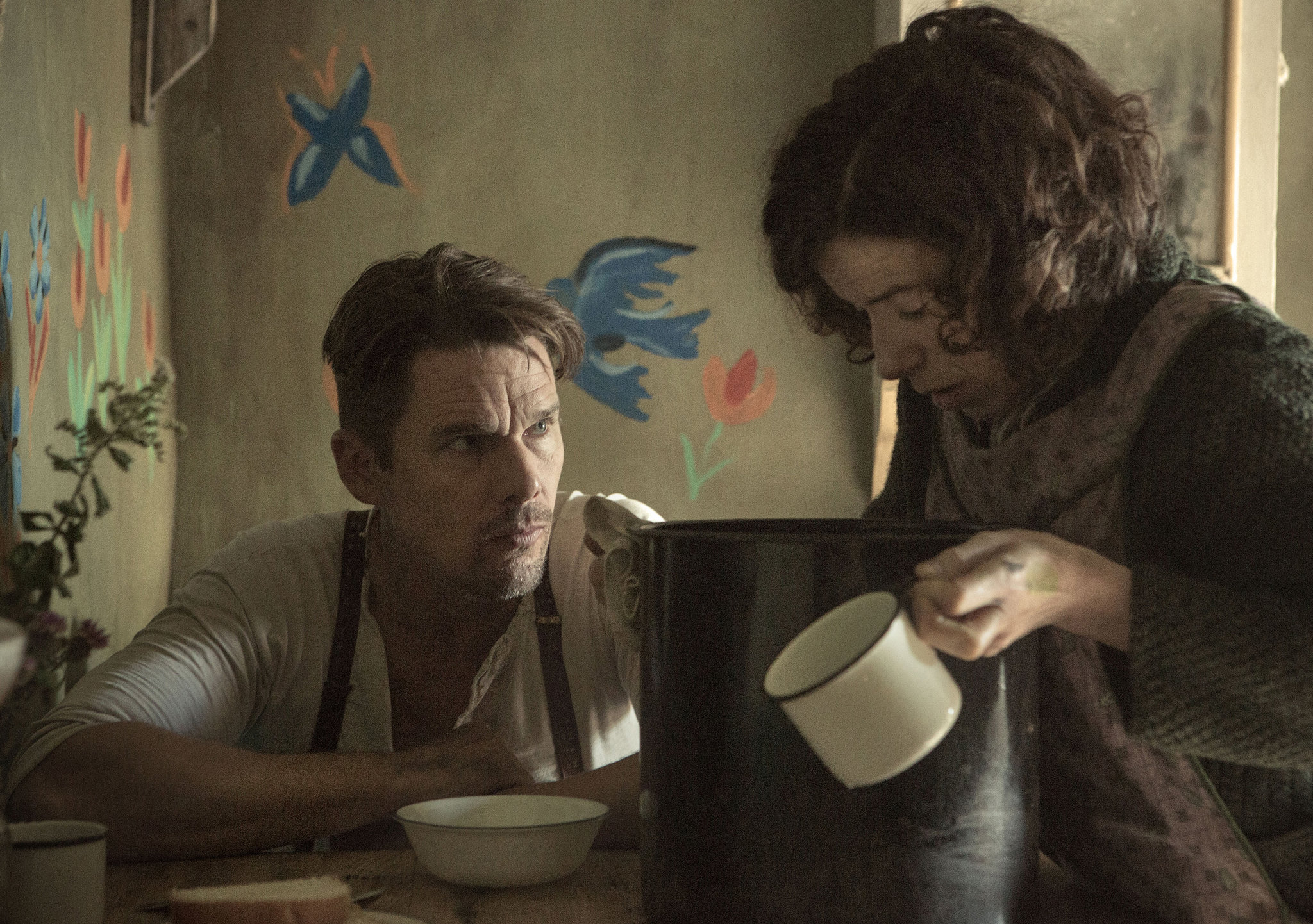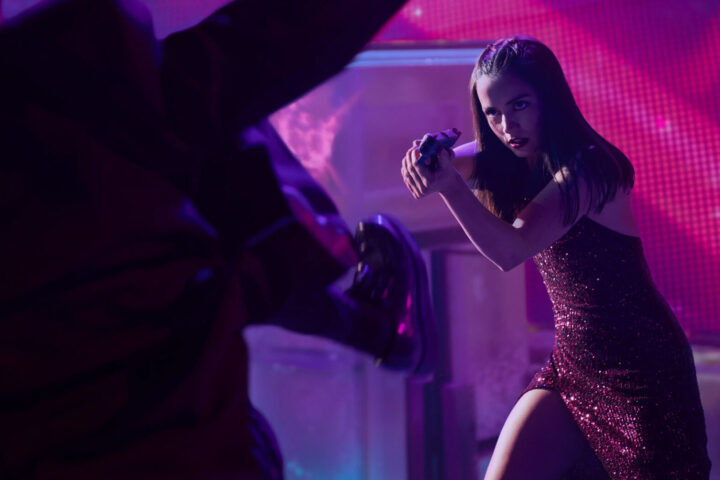Renowned Nova Scotia folk artist Maude Lewis get a biopic in Maudie, a portrait of an artist that spans succeeds in being extraordinarily affecting in the hands of star Sally Hawkins. Working from a screenplay by Sherry White, Irish director Aisling Walsh follows Lewis from the 1938 to 1970, and Hawkins’ revelatory performance convincingly keeps pace with the evolution of a child-woman who became a servant, then a devoted wife and world-renowned artist.
By most accounts, her story was little known. Taught by her mother at a very young age, painting was, for Maud Lewis—body twisted by juvenile arthritis from a very young age—an escape from the taunting of other students and difficulties of her condition. She once famous said that “a life without friendship and love” was not worth living; little doubt she worried about both.
An adult when her parents died, she was nevertheless looked after by her spinsterish Aunt Ida (Gabrielle Rose) while being defrauded by crooked brother Charles (Zachary Bennett), who sold the family home out from under her. Nothing left but to strike out on her own as a cleaning lady to the most brutish man in town, who would later become the love of her life. That’s exactly what she did, and their relationship lasted across four decades.
Answering an ad for a cleaning lady, Maud Dowley first met rough-hewn Everett Lewis (Ethan Hawke) when she showed up on his doorstep offering her services. Soon the unusual pair was living in his 10×10 foot house with no running water or electricity. While initially subjugated, Maud found immense satisfaction during days alone, painting flowers and splashes of color on the walls and windows. She soon graduated to small postcards, then petite paintings, never giving consideration to their quality.
This changes with the arrival of a New York sophisticate (Kari Matchett), and after the glamorous visitor takes a summer home nearby and befriends sheltered Maud, she recognizes the genius in what appear to be childlike paintings of animals, seasons, ice skaters, seaside landscapes and picture book dimensionality. So does, eventually, Richard Nixon, who commissions a painting and whom Maud insists pay her before delivery.
Maud’s success weighs heavily on Everett, who doesn’t take much to being on a television documentary, written about in popular magazines or having his wife’s reputation eclipse his own. But while he outwardly bemoans the attention, something interesting begins to happen.
In a series of beautifully observed scenes, Walsh charts their growing intimacy as Everett, whose coarseness begins to soft ever so slightly, comes to understand that Maud’s paintings, for which he sells each piece and handles the money, are important enough that he should assume her household duties of cooking and cleaning. And that, in Maudie, is sort of a big deal.
There are lovely visual indicators of their growing relationship—how Hawke carries Hawkins across the snow and gradually allows her to face him while he pushes her in a wheelbarrow. In these and other scenes, including a raw force encounter involving a truck and a driveway, and a simple confessional scene on a bench overlooking the seaside, are pointed reminders of how affecting a sincere movie love story used to be.
Shot in St. John’s and doubling for Newfoundland, Walsh has mounted a widescreen, burnished picture in love with its people and location, the kind we haven’t seen in a few decades and one that wears its sincerity on its sleeve. It is a movie that serves, above all, to be a vehicle for its actors, but one that has a few things to say about marriage and the self-actualization of an artist against all odds.
The principal driver of this handsome film is Hawkins, whose big-leagues performance should garner her an Oscar nod next year, and her exquisite ratio of technique and emotion, both perfectly calibrated, is as vivid an artwork as those of Lewis herself. The degradation of Maude’s physicality and her optimism to overcome being “born funny” are much of what makes this movie so fascinating, but this is not a movie about an actor playing a disease.
With disarming kindheartedness, Hawkins’ portrait of simple and unassuming Maude—with her often shyly cocked head, whispered asides and moment-to-moment reactions to Hawke’s Everett, whose unpredictable nature surprises both Maude and us—culminates in a drive-way scene late in the picture. You can’t “act” your way to this type of empathy on behalf of the audience, and Hawkins by that critical juncture has engendered so much goodwill that it is impossible not be moved by her struggle.
Hawke doesn’t always fare as well; boorish isn’t his strong suit. For much of the film, it feels like a bit of put-on. The actor, who often eschews Hollywood fare to focus on smaller, quality projects such as this one, initially overplays the grunting, closed-down quality of Everett Lewis, making him so overbearing that when he finally opens up later in the picture, it feels didactic rather than organic to the story.
By the time the picture resolves the defining emotional episode of Maud’s life—the loss of a baby daughter and the child’s fate, and Maud’s reaction to such—we’ve seen as tender a love story as the movies have produced in years, and the story of an artist in her full power, all from a tiny shack with “the whole world outside a window.”
3 1/2 stars.



